- Share
- Like
- Tweet
- Digg
- Tumblr
- VKontakte
- Love This
- Odnoklassniki
- Meneame
- Blogger
- Amazon
- Yahoo Mail
- Gmail
- AOL
- Newsvine
- HackerNews
- Evernote
- MySpace
- Mail.ru
- Viadeo
- Line
- Comments
- SMS
- Viber
- Telegram
- Subscribe
- Skype
- Facebook Messenger
- Kakao
- LiveJournal
- Yammer
- Edgar
- Fintel
- Instapaper
- Copy Link
Multi-disciplinary studio +tongtong has designed Barsa Taberna, a Spanish-inspired tapas restaurant in downtown Toronto that evokes the intimacy and vibrancy of Barcelona. Both the client and the designer John Tong have spent a considerable amount of time in Gaudí’s city, and shared the excitement of capturing that energy in the creation of Barsa. An intimate yet full of life space that embodies the essence of authentic tapas restaurants, plus the food is amazing! We’ve tried it, and yes we will go back!
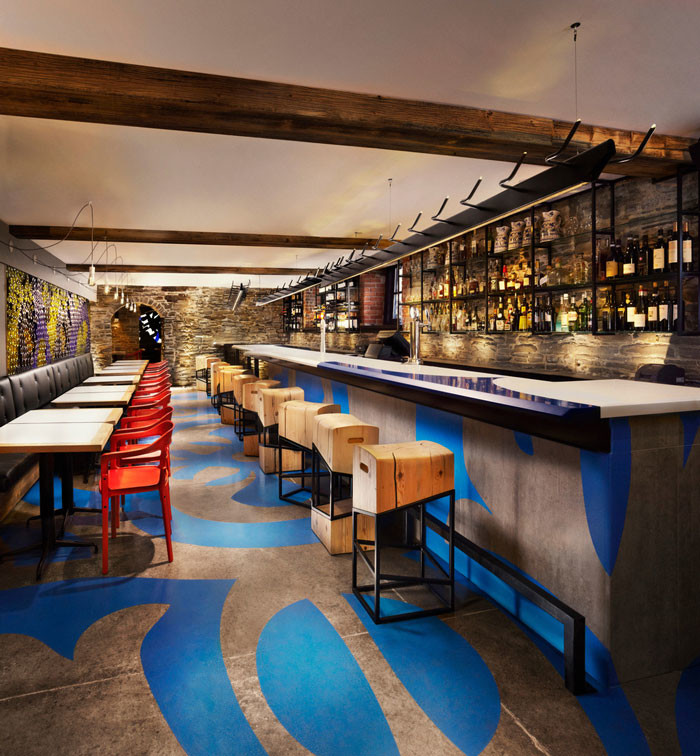
Image © Lisa Petrole Photography
In Spain, there’s this way of making things work no matter the conditions. For instance, you might have to walk under stairs and pass a press kitchen to get to the dining room, the kitchen is half the size it should be, and the washrooms might be located down an alley. However, these seemingly difficult site conditions really contribute to the authentic feel of a tapas bar.
– John Tong
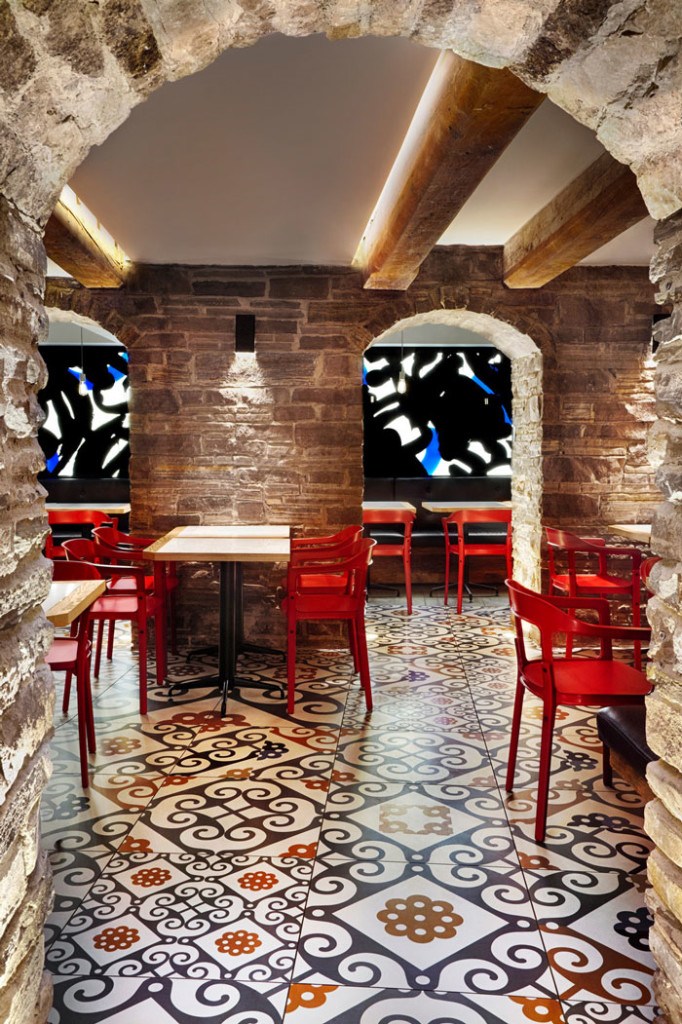
Image © Lisa Petrole Photography
Located in a historical building across from St. Lawrence Market, the 3000 square-foot site posed quite a few challenges and restrictions. The original space was dingy with low ceilings, and was so dark the only way to explore the space was by flashlight. Because of the building’s historical status, the windows, mason stone walls and main door had to remain untouched.
+tongtong transformed the space through animation, bright colours and patterns reminescent of Spain, while maintaining the site’s historical integrity. The result is a sleek, edgy interior that balances freeform expression and modernist architectural language.

Image © Lisa Petrole Photography
To capture the essence of Barcelona’s tapas culture, where patrons can often pick their own tapas straight from the kitchen, the prep area was moved forward and outwards. Chefs prepare charcuterie and cheese platters out in the open, surrounded by jars of produce, hanging chili peppers, cast iron pans, and meat slicers.

Image © Lisa Petrole Photography
The bar area at the front of the restaurant features a swirling, vibrant blue graphic floor pattern that was extrapolated from the Gaudí-influenced tile in the main dining room. The design continues on the sides of the kitchen walls and the bar, creating a cohesive space. To achieve the feature, a computer-generated adhesive stencil was laid down on the new concrete floors, and then coated with epoxy paint.

Image © Lisa Petrole Photography
The two-tone Corian bar is complemented by the custom-designed stools made of salvaged, old-growth pine. Named the “little pest” (“becho mio” in Spanish) the stool comes in three variations, all looking different depending on their orientation. The stools feature seating that resemble worn butcher blocks and carved out handles reminescent of old wine crates.
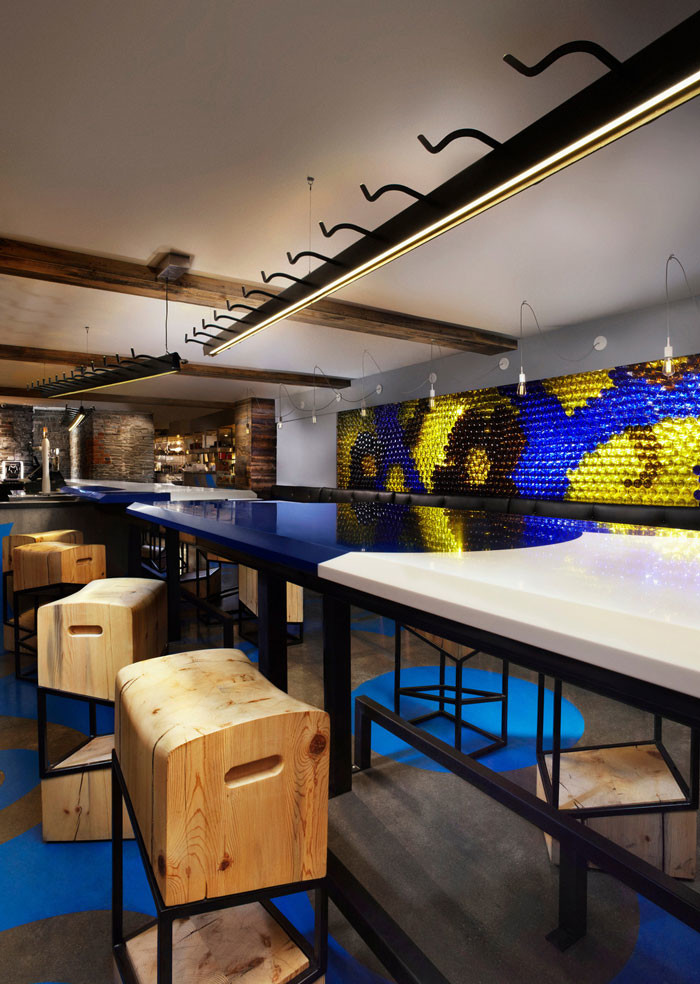
Image © Lisa Petrole Photography
They appear especially unruly when positioned across the room from the straight and proper red chairs. Above the bar, three custom-designed LED light fixtures hang. With a motif of bullhorns, the armatures resemble a charging bull caught under a strobe light, frozen in a stop motion sequence.
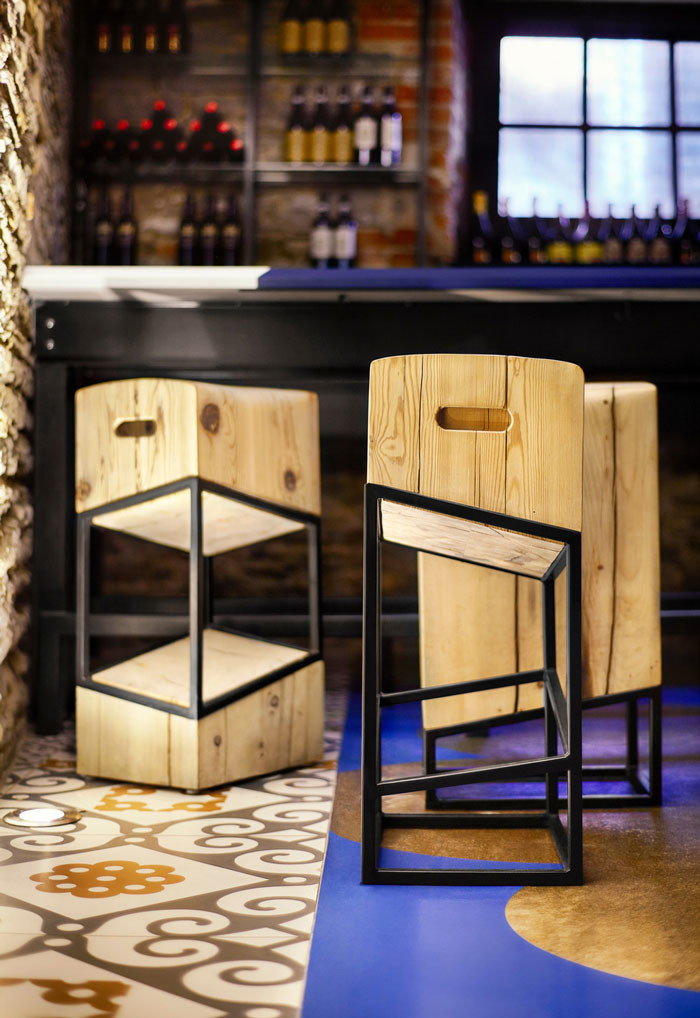
Image © Lisa Petrole Photography
On the other side of the bar area, the red chairs encase custom-designed tables that feature a laminate top with a wooden edge. Above the banquet seating is a glass wall made of 1,500 coloured wine bottles, all painstakingly hand-cut by the client’s friends, and inspired by the floor tile’s natural forms. Old stone archways differentiate the grotto-style dining area, a very tight, dark and windowless space with low ceilings and wooden beams.
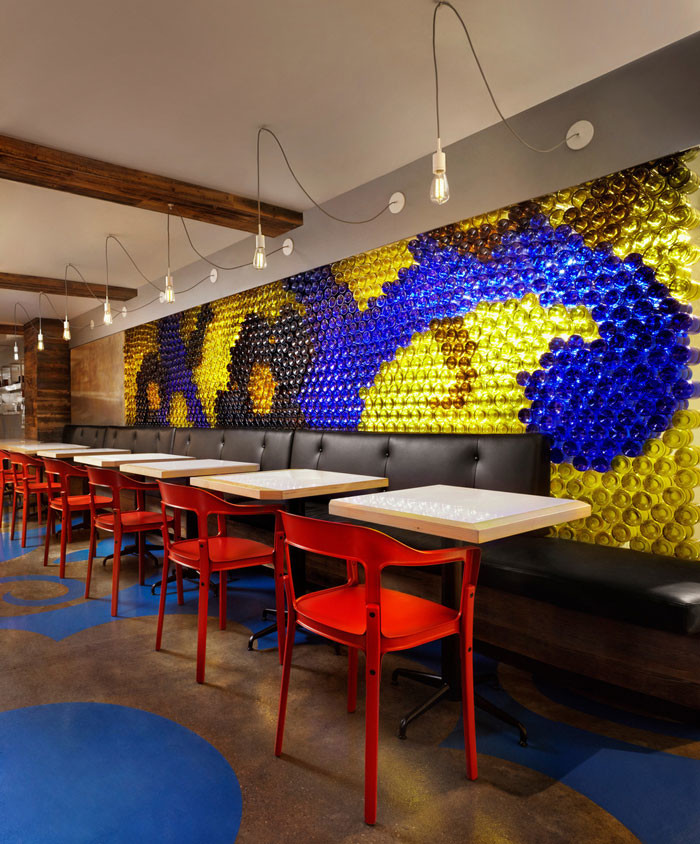
Image © Lisa Petrole Photography
To conserve the limited space, +tongtong knew they needed to integrate a light source into the project spatially. The main light source is a rear-lit mural, a collaboration between local graffiti artist Pascal Paquette and Tong. And like the armatures above the bar, the running of the bulls is the central theme.

Image © Lisa Petrole Photography
Bulls are massive, bulky and when they’re charging through, it’s chaos and threatening. It’s like a hurricane. We art directed with Pascal to create something that represented that cultural ritual.
– John Tong
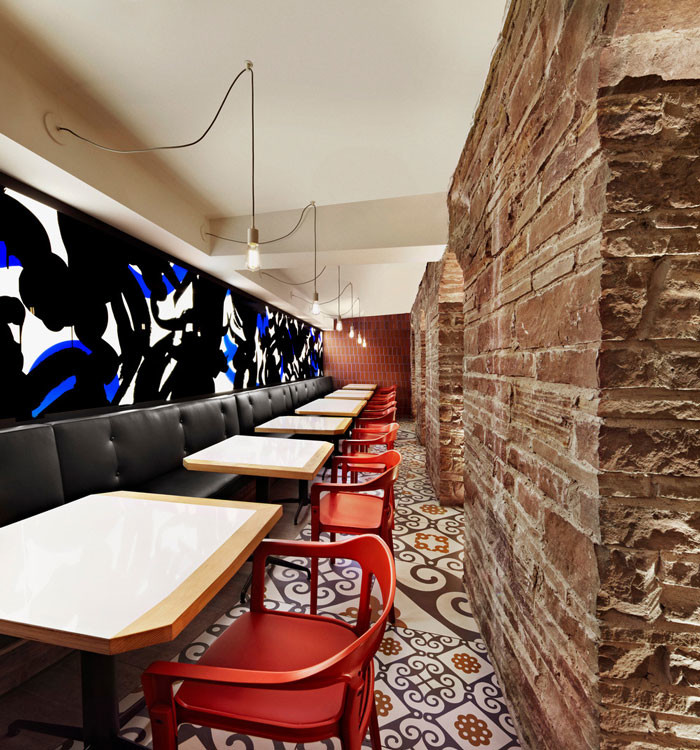
Image © Lisa Petrole Photography
The tile running throughout the space is purposefully laid to draw attention to the nonlinear nature of the space. The mason wall that separates the bar area from the rear dining room is in fact angled, “a kind of character you find in a lot of older, medieval cities in Europe,” Tong explains. “We wanted to accentuate that by installing the tile off-square from the main space.”
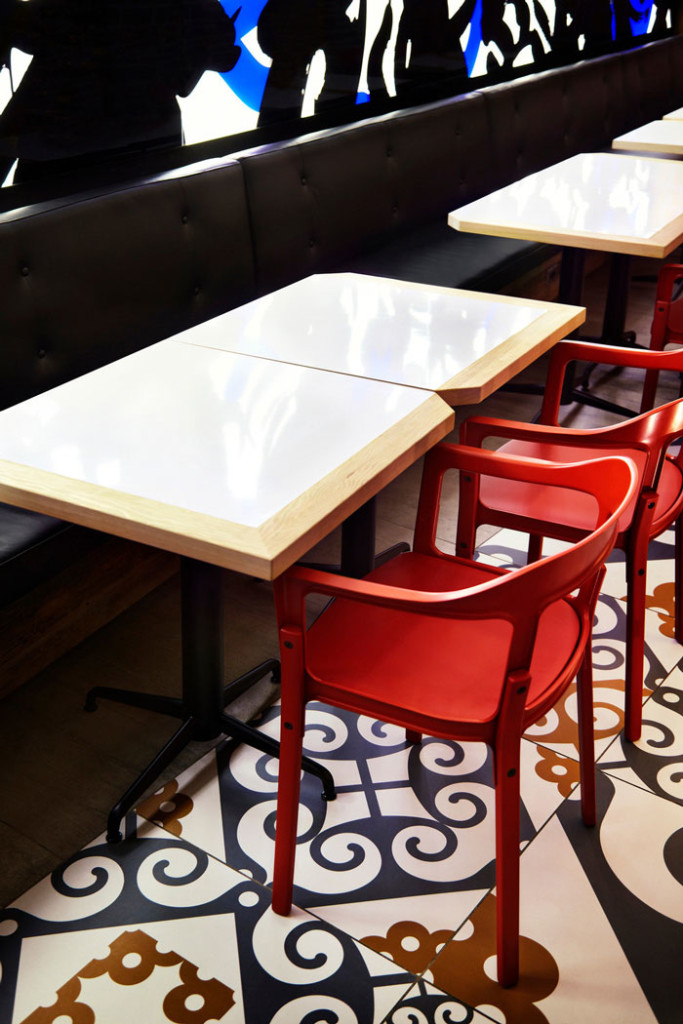
Image © Lisa Petrole Photography
In the warmer months, a large, 75-seat patio runs the whole length of the restaurant. As part of the Market Street revitalization, a project that restored designated heritage buildings and reanimated the neglected street, Barsa’s patio will act as an anchor in the rejuvenated thoroughfare.
Facts:
Client: Aras Azadian
Chef: Michael Smith
Restaurant Consultants: The Fifteen Group
Design Firm: +tongtong
Lead Designer: John Tong
Senior Designer: Nathan Dykstra
Designer: Kateryna Nebesna
Architect of Record: ERA Architects
Contractor: Parallel General Contractor
Custom Fabricator: Cobalt Fabrication Inc
Artist: Pascal Paquette
Size: 275 square metre Space
Photography: Lisa Petrole Photography
Bicho Mio Stools: Designed by +tongtong; woodwork, Canadian Salvaged Timber
Bottle Wall: 1400 cut wine bottle mosaic wall. Designed by +tongtong; installation: Cobalt Fabrication
Light Fixture over bar: designed by +tongtong
Backlit Mural: art directed by +tongtong
Art: cut vinyl art by Pascal Paquette
Red Dining Chairs: Magis Steelwood chair supplier: Herman Miller
Custom Floor: designed by +tongtong; vinyl stencil for floor coating – produced and installed by Maher Sign Products
*All images and information courtesy of v2com.
